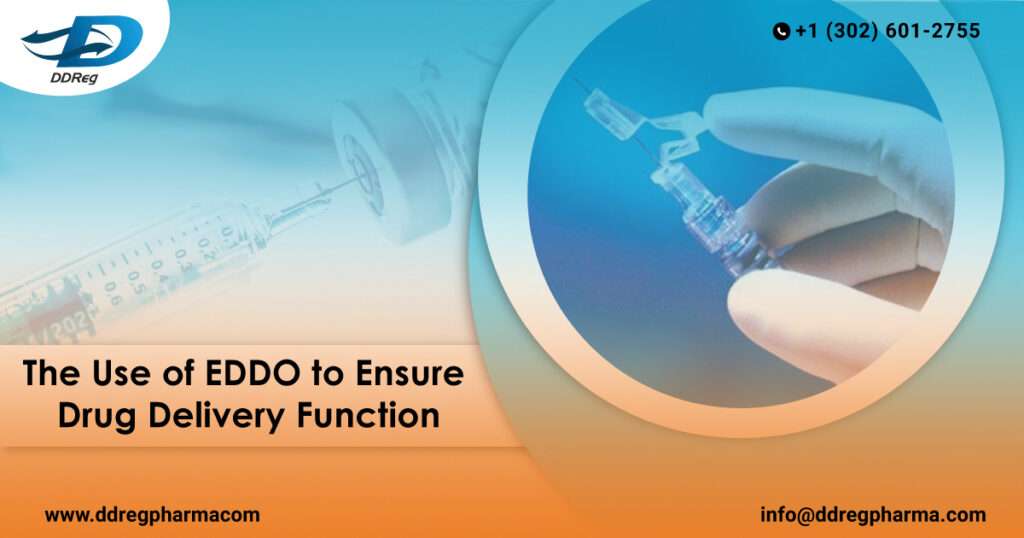When it comes to ensuring the safety and effectiveness of medical devices intended to deliver drugs, understanding Essential Drug Delivery Outputs (EDDO) is important. The advent of drug-device combination products has necessitated the development of robust guidelines to ensure safety, efficacy, and performance. One such crucial aspect of these combination products is the Essential Drug Delivery Outputs (EDDOs). The recent FDA draft guidance from June 2024 provides comprehensive insights into identifying, verifying, and validating EDDOs.
Essential Drug Delivery Outputs (EDDOs) are the specific design outputs of a drug delivery device that are crucial for the device to function as intended. These outputs include all essential characteristics and performance metrics that guarantee the device can deliver the drug safely and effectively. Examples of EDDOs include Deliverable volume, Cap removal force, Break loose force, Glide force, and Needle safety activation force. Note that while the examples listed above give an understanding of what these terms mean, in fact, the EDDOs are the specifications associated with each of these metrics
Redefining Design Inputs and Outputs
There is a need to delineate the design input from output in medical device design-
Inputs for Design: In accordance with § 820.3(f), these are requirements that could either be physical or performance-based, under which the design is to be undertaken.
Design Outputs: According to § 820.3(g), design outputs are the results of the design effort at each phase, which culminate into a device master record that includes the device itself and its packaging and drug labeling.
EDDOs, according to the recent FDA guidance, refer to outputs required to ensure delivery of the intended drug dose to the intended site. These outputs are important in the sense that they contain the whole of delivering drugs, from the preparation of the product to the delivery of the final dose. EDDOs work at a systemic level in the sense that they directly affect device performance and, in a way, ensure the performance complies with safety and efficacy standards.
Verification and Validation of Essential Drug Delivery Outputs
Verification and validation are a critical stage to verify that EDDOs meet the device’s needs properly in its life cycle. Verification is done to satisfy that the design output meets the requirement of design input, and validation is performed for the purpose that the final device should meet user and intended use. These frequently consist of preconditioning and design verification testing in order to replicate the various stressors that are likely to take place during the transport, storage, and use of the device. Preconditioning may, for example, involve placing the device under certain temperatures, humidity, and physical shocks that it may experience in real-life atmospheres.
Bridging the Gap: From Requirements to Specifications
One of the main responsibilities of EDDOs is to bridge the gap between the user requirements and the detailed specifications. Requirements describe what the device is supposed to accomplish from the user’s point of view in terms of functionality and performance. Specifications describe how this is achieved in technical terms with tolerances, dimensions, and other measurable parameters.
EDDOs smoothly achieve this syncretization, ensuring that a device meets user needs in every aspect possible while working to exacting technical standards. For instance, deliverable volume, cap removal force, and needle safety activation force are some of the EDDOs that safeguard proper and safe functioning of the device.
FDA’s Guidance on Essential Drug Delivery Outputs
The FDA’s guidance on EDDOs provide a structured approach to identifying and maintaining these outputs. This includes a step-by-step process that highlights the importance of controlling EDDOs throughout the design lifecycle. By doing so, manufacturers can ensure their devices meet the highest standards of safety and effectiveness.
The guidance also offers examples of EDDOs, such as deliverable volume and cap removal force, to illustrate how these outputs translate into real-world applications. However, it is essential to understand that these examples represent the specifications associated with each EDDO, rather than specific values, to avoid the impression that the US FDA is enforcing particular specifications.
Post-market Changes and EDDOs
The performance of the EDDOs must be maintained while making any post-market change in design or manufacturing the device. Any modifications must therefore be assessed in terms of their impact on existing EDDOs, and new EDDOs may need to be identified, verified, and validated. This ensures changes will not compromise the device’s ability to deliver drugs safely and effectively.
Examples EDDO for different types of drug delivery devices are illustrated in the FDA’s draft guidance, included as examples within Appendix A. For example, with a prefilled syringe, it might be related to glide force or break loose force; with an autoinjector, it could be a needle safety activation force. These examples show how some design outputs are controlled or identified towards ensuring that the performance of a device is as expected.
Conclusion
Essential Drug Delivery Outputs bridge the gap between user requirements and detailed specifications, ensuring that devices are not only functional but also safe and effective. By understanding and implementing EDDOs, manufacturers can continue to innovate and excel in the rapidly evolving field of drug delivery devices.
DDReg provides end-to-end regulatory services and safety solutions for medical devices. Reach out to the experts for more information. Read more about medical devices here: Asserting Patient Rights: The Importance of Labels for Medical Device Traceability

